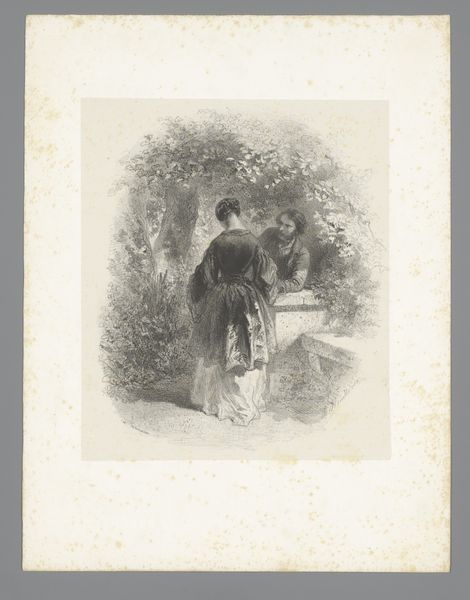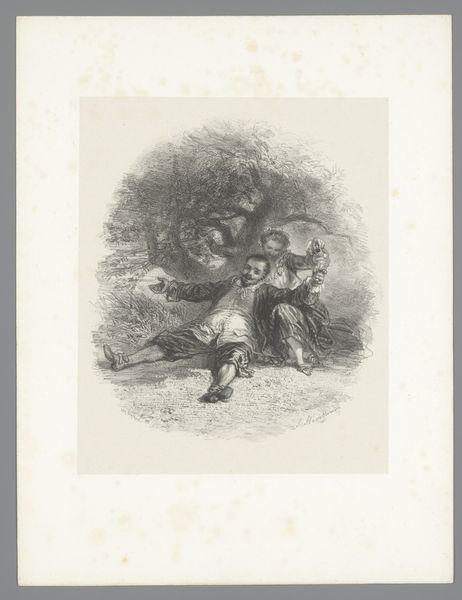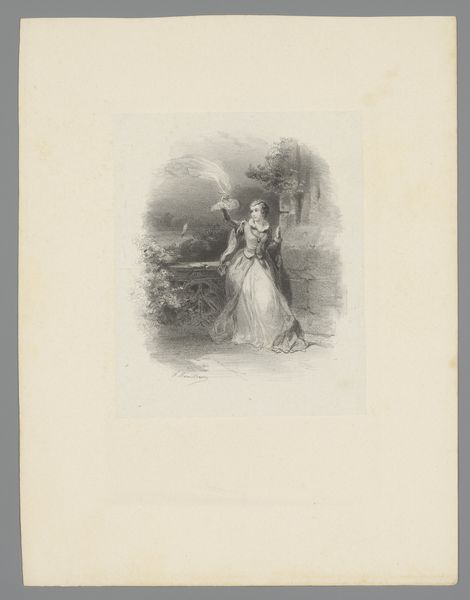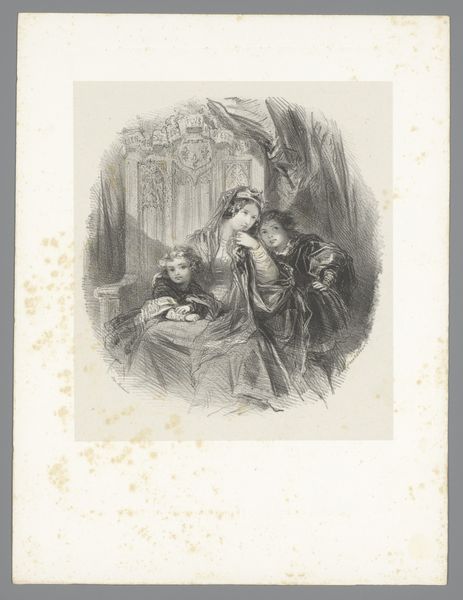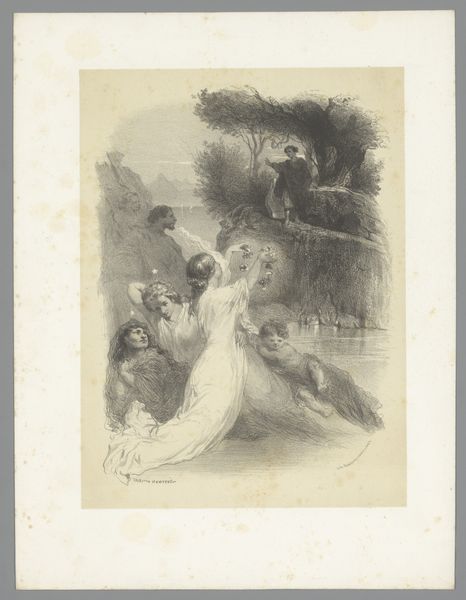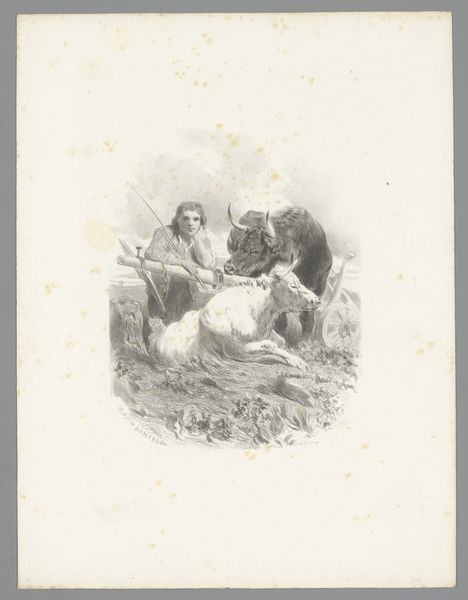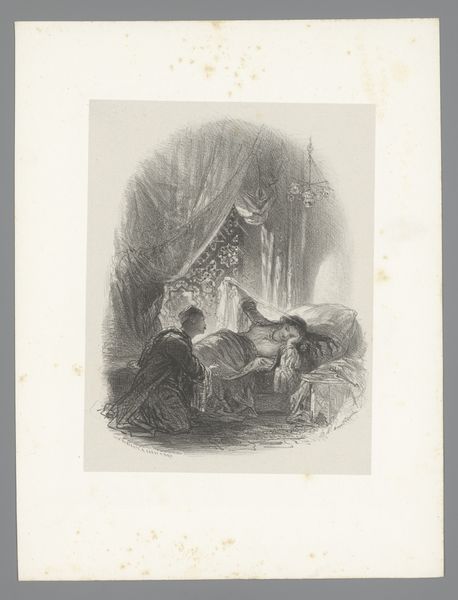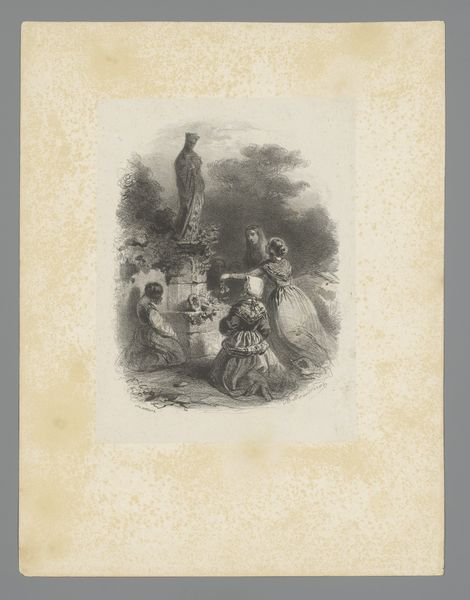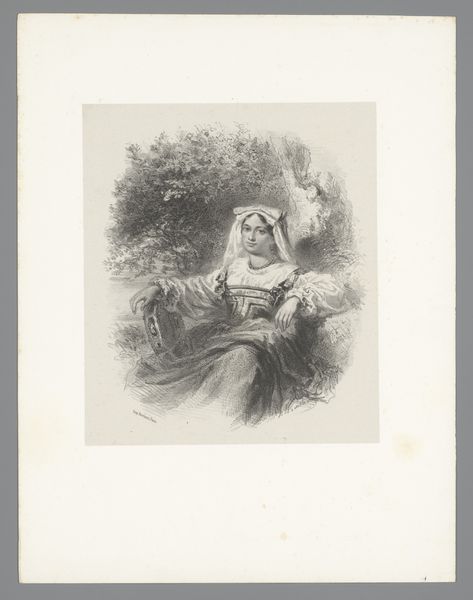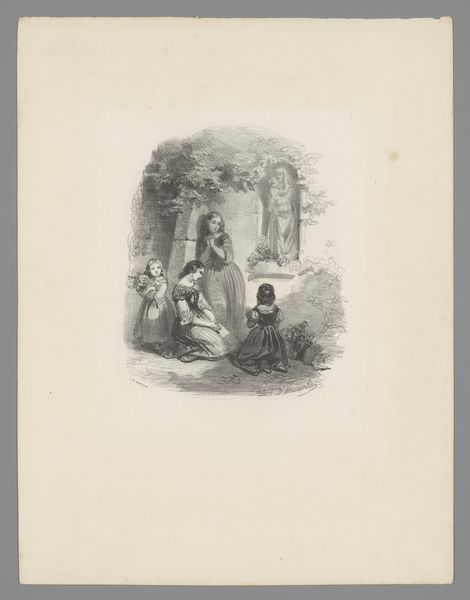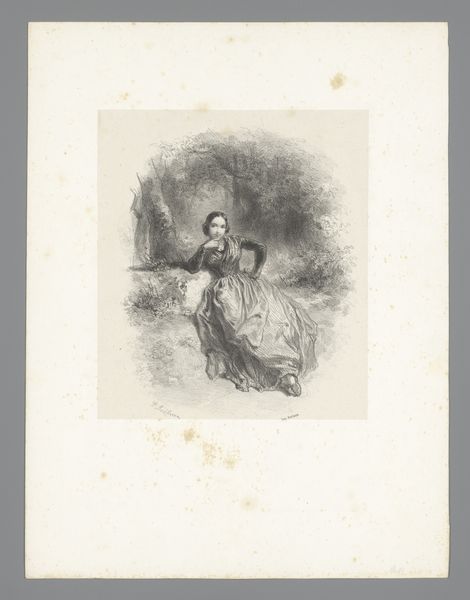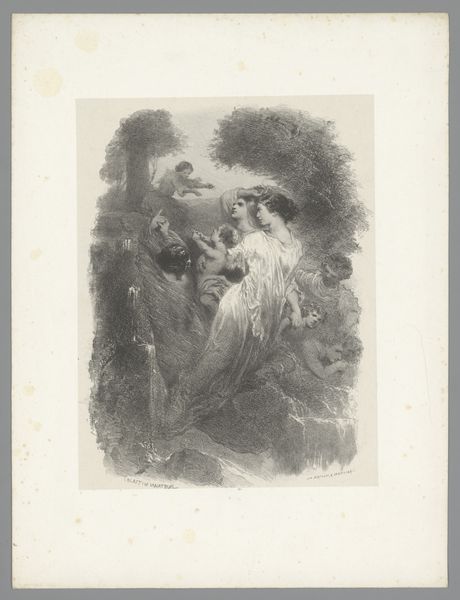
Dimensions: height 357 mm, width 275 mm
Copyright: Rijks Museum: Open Domain
Curator: Welcome. Before us hangs a print attributed to Célestin Nanteuil, titled "Vrouw met paard, hond en bediende"—or "Woman with horse, dog and servant"—created sometime between 1826 and 1880. Editor: Immediately, I'm struck by the stark contrast between the dark, imposing figure of the woman and the rather subservient, almost caricatured depiction of the servant. It's a powerful statement about social hierarchy, even before we delve into symbolism. Curator: The composition is carefully arranged to emphasize that hierarchy. Observe how the woman, elegantly attired and centrally placed, dominates the visual space. The positioning of the horse and hound further accentuates her status, acting almost as emblems of her wealth and position within the society depicted. Note the textures achieved with the engraving technique. Editor: The dog, an elegant greyhound, appears alert but almost pleading, further underlining the themes of domesticity and dependence that permeate the image. The horse is interesting – almost spectral and relegated to the background. Its prominence is undeniable, a potent symbol. Curator: Precisely. The horse, often a symbol of power and virility, is here subdued, literally behind the woman and a subordinate, adding another layer to the representation of gender dynamics. In this Romanticist example, look closely at the detail given to the texture of the servant's clothing, compared to that of the mistress' fine, flowing dress. Editor: Absolutely. It almost feels like a scene lifted directly from a novel, with the woman as the stoic, central figure navigating a complex social landscape. I sense echoes of Austen and Brontë, don't you think? The racial aspect, I cannot ignore either. Curator: It’s certainly an example of its era, replete with societal commentary. However, stripping back the socio-historical interpretation, one can’t ignore the mastery with which Nanteuil balances light and shadow. The play of lines in the trees behind creates a sense of depth that pushes the figures forward, further highlighting the subject’s rigid stance and the formality within this piece. Editor: A formal study enhances the artwork. I find this depiction deeply resonant, echoing tales of power, control, and the often-uneasy relationships defining social status, played out on the stage of domestic life. Curator: Indeed, a piece that remains fascinating, both for its artistic execution and the cultural values it inadvertently reflects.
Comments
No comments
Be the first to comment and join the conversation on the ultimate creative platform.

